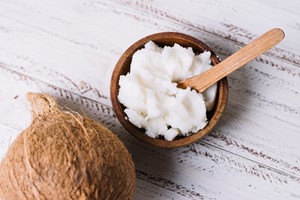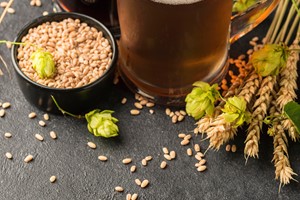The global population is growing at a rate of 1.14 percent. The increasing calorie intake per capita is leading to substantial increase in the global food production. Growing urbanization and changing lifestyles are driving demand for convenience and packaged foods.
The packaged food industry recorded USD2.46 trillion in retail sales for the year 2016. In the processed and packaged foods, ensuring food safety and quality starting from transportation to farm to fork and storage facilities is a major concern. To meet this demand, food additives are used. Food additives which are used to enhance the taste, color, texture of food, same time maintaining the freshness and nutritional content, are expected to cross USD65 billion by 2022; growing at a CAGR of 5.5 percent from 2017 and 2022.
Market drivers
The mature markets of developed economies constitute nearly 60 percent of processed food market. The increasing disposable incomes of the burgeoning middle class is driving the shift towards convenience and processed foods, thus escalating the need for food, thereby need for food additives. The global retail and food service market which grossed sales of USD4.9 trillion in 2016 is a major driver for the food additives market driven majorly by increased consumer's exposure to packaged food and beverages. This is supported by growing urbanization of the rural population and rising organized market in rural segments of developing economies of Asia, Latin America and Africa. One more major driver in the food additives market is the growing supply chain complexities/inefficiencies in the food and beverage industry - transportation costs, last mile reach for food products, storage facilities, as a part of companies expansion strategies are growing, which is increasing the complexity in the farm to fork value chain. This emphasized on the use of food additives to reduce the spoilage and wastage costs. Also, as many countries follow the standard US regulatory approved additives, the onus is on the US regulatory to provide stringent laws to determine the safe additives.


Food additives segments
The largest segment in the market is flavors and flavor enhancers market which recorded USD12.1 billion in 2016, followed by hydrocolloids which function as texturizer, thickening, stabilizing and gelling agents. Food emulsifiers and Food enzymes are expected to grow at a CAGR of 5.4 percent and 8 percent during 2017-2022. The fastest growing segment is the sweetener type which is seen as an alternative to sugar used in food and beverages. Growing consumer demand for low fat options and low wastage costs is expected to drive the demand for fat replacers and antioxidants. Preservatives particularly are considered very important to reduce the food spoilage that occurs due to microbial reactions.
Regional growth


The world is recovering from recession and this is expected to increase the consumer demand for packaged food; which in-turn furthers the food additives industry. The European markets didn't see any decrease in the food and beverage industry when compared to drastic fall in production in other industrial segments. That said, any slightest uptick in economy will boost the demand for European packaged foods and food additives market, as consumers tend to splurge first on food items. Acceptance of convenience and package foods in the Asia pacific regions is seeing demand, for food and beverage additives, from populous countries like India, China, and South Korea. Thus, making APAC the fastest growing food additives market. The US market is seeing demand for candies, gums and other confectionary products, apart from its matured demand for baked foods. This is expected to increase the market for emulsifiers, colorants and sweeteners in the US region; growing at an expected CAGR of 6.7 percent during 2017 to 2022.
Market prospects
The strategies being adopted in the food additives industry is in the innovation category under the development of natural food additives and functional food ingredients to meet the customer demand. Many foreign companies are entering the emerging economies through partnerships as they see the developed countries as matured markets in terms of revenue growth. Another major opportunity is in the functional food additives and natural additives market with demand for Omega 3, vitamins, fiber and antioxidants enriched foods. In the food colorants market, the natural color additives recorded 45 percent in 2016, thereby reducing the share of synthetic colors. In the sweetener market the Stevia extracts are used as natural additives. Companies need to undertake clean label solutions to meet the safety standards to cater to the global food consumption. The FAO/WHO committee along with CODEX determines the acceptable standards of food additives to be used.














